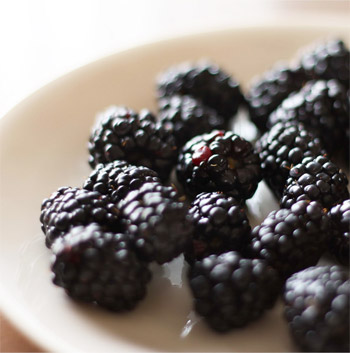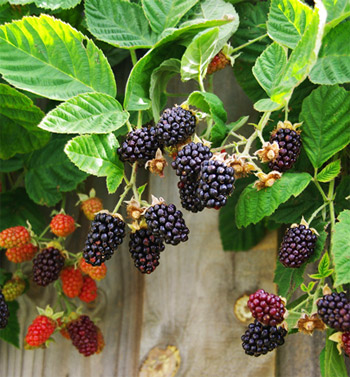|
|
|
 , ,
Font size |
Encyclopedia of Health Benefits of Berries

23. Olallieberries:
Loganberry and youngberry hybrids are called olallieberries, which are
found mostly in California. It is rich in vitamin C and fiber that are helpful
in reducing cancer risks. Olallieberry is a hybrid variety of loganberry and the
youngberry, has the physical appearance of the classic blackberry. It�s mainly
grown along the western parts of United States and has a distinctive, sweet
flavor. It is used for making excellent jams and jellies and also to make
distinctive berry wines The berries are large, shiny and juicy. Olallieberry was
named as Olallie and released in 1950.
The leaves of Olallieberry are very much like those of the Himalayan black
berry. Olallieberry are very special berries that are mostly available in
California.
Olallieberries are large, shiny, juicy berries in the bramble family. They are
most commonly compared to blackberries, and they are closely related to
blackberries. However, they have a more intense, tart flavor, and a very brief
growing season. Olallieberries are most widely cultivated along the West Coast
of the United States, specifically in California, and are a coveted treat while
fresh. They can also be found frozen and in the form of preserves such as jams
and jellies. In some areas, olallieberries are also used to make distinctive
berry wines.
In 1935, an employee of the United States Department of Agriculture crossed a
loganberry and a youngberry, producing a varietal which was named �Oregon 609.�
When the berry was released to the general market, it was renamed an Olallie, a
Chinook word for �berry.� It proved to be very successful in cultivation in
California, and the state quickly dominated the olallieberry market. Alternate
spellings for the berries include olallaberry, olalliberry, and ollalaberry.
The parents of the olallieberry both owe a great deal of their genetic material
to the blackberry. Loganberries were bred by crossing blackberries with red
raspberries, while youngberries are a cross of blackberries and dewberries,
smaller wild relatives. The genetic material in an olallieberry is approximately
two thirds blackberry and one third red raspberry. While the berries
superficially resemble blackberries, they grow on canes or vines which are much
less thorny than blackberries. They also retain the sweet core of flavor common
to raspberries.
 Health benefits of Olallieberries Health benefits of Olallieberries
-
Olallieberry is an excellent source of vitamin C and fiber which helps
to reduce the risks of cancer
-
Oxygen Radical Absorption Capacity value of blackberry is slightly
higher than blueberries
The majority of olallieberries end up in jams, preserves, and wines, because
the growing season is so short. When fresh, they are also used to make pies,
tarts, and other pastries, as well as being eaten plain or included in fruit
mixtures. Southern California is well known for its olallieberries, and several
large producers there make olallieberry preserves for shipment to other parts of
the country. Frozen olallieberries are also available from these companies for
use in a variety of baking applications.
Like many other brambles, olallieberries rely on an extensive perennial
underground root system. The berries grow on biennial stalks or trailing vines,
depending on the varietal. When the vines stop bearing, they are cut down close
to the ground so that the plant can generate new ones. As with other bramble
fruits, the decision to grow olallieberries should not be taken lightly, since
once the roots are established, the plants will keep returning. They also prefer
a cooler climate such as a temperate coastal zone, and benefit from the
installation of stakes or trellises to grow on.
Next..
Dated 12 March 2013

|
|
|
|
|
|
|









